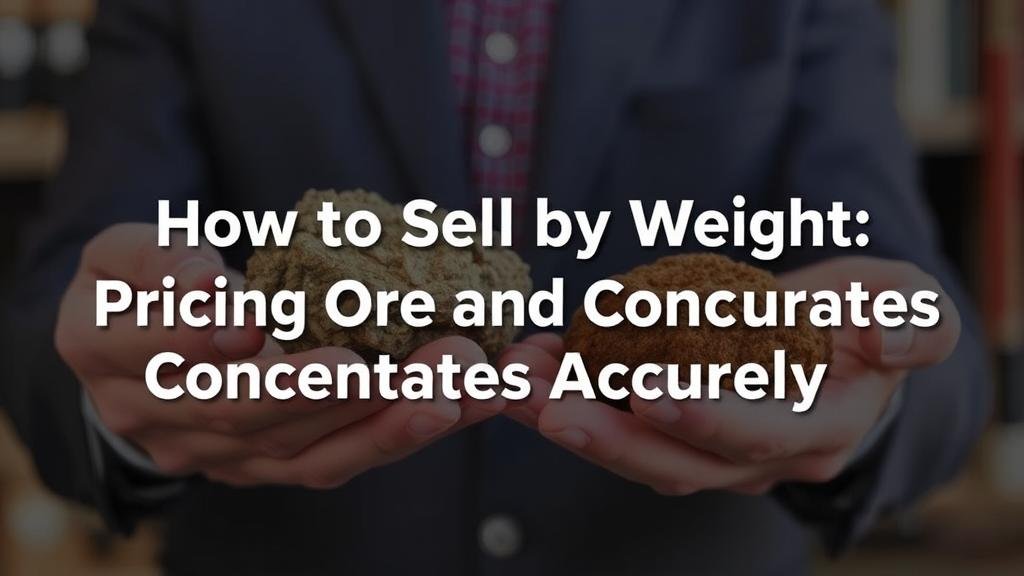How to Sell by Weight: Pricing Ore and Concentrates Accurately
How to Sell by Weight: Pricing Ore and Concentrates Accurately
In the mining industry, understanding how to price ore and concentrates accurately is critical for profitability and market competitiveness. The pricing is often determined by the weight and metal content of the ores and concentrates, necessitating a clear approach to measurement, valuation, and contract negotiations. This article will explore the essential factors that contribute to accurate pricing, including industry standards, weight measurement, and real-world applications.
The Importance of Weight in Pricing
Weight serves as a primary indicator for both selling and purchasing ores and concentrates. It is crucial because final sale prices are often based on the number of kilograms or tons of material being sold. The importance of accurate weight measurement cannot be overstated; discrepancies can lead to significant financial losses or gains.
For example, in 2021, the global average price of copper was approximately $9,200 per metric ton. If a mining company miscalculates the weight of copper concentrates, it could potentially underreport or overreport revenue by tens of thousands of dollars for each shipment.
Industry Standards for Measurement
Accurate pricing of ore and concentrates relies on standardized measurement techniques. following are commonly used methodologies:
- Batch Weighing: This involves weighing the ore in batches as it is produced, which is essential for tracking output and since different batches may have varying grades.
- Continuous Weighing: Especially used in conveyor systems, continuous weighing allows for real-time measurement of material as it is transported, leading to greater accuracy in reporting.
Also, adherence to standard practices set by organizations such as the International Council on Mining and Metals (ICMM) can further ensure the legitimacy of measurement processes.
Understanding Ore Quality and Concentration
The quality and concentration of ore can significantly affect its pricing. The metal content, or grade, of the ore determines its economic viability. Higher-grade ores command higher prices. For example, an ore with a copper content of 25% can sell for about $2,300 per ton, while ore with only 5% copper might fetch only $460 per ton.
Also, concentrates must be processed to increase the metal content before sale, which often involves complex and costly procedures. Understanding the journey from raw ore to concentrate, including the costs associated with processing and transportation, is vital for accurate pricing.
Market Conditions and Pricing Models
Pricing models in the mining sector often take market conditions into account. Factors include global supply and demand dynamics, exchange rates, and geopolitical influences. For example, during periods of high demand for specific metals, such as lithium in the battery industry, miners can capitalize on increased prices.
Commonly used pricing models include:
- Fixed Price Contracts: Pricing is locked in at a predetermined rate, providing stability for both buyer and seller.
- Floating Price Contracts: Prices fluctuate based on market conditions, allowing for potential profit in rising markets.
Real-World Applications and Case Studies
A succinct example is Rio Tintos 5, 5, 5 strategy, which focuses on achieving five key objectives, including production in a cost-effective manner. The company has implemented advanced technologies and methods in measuring ore weight and quality to boost operational efficiency and optimize pricing models.
Another prime case is Barrick Gold, which utilizes continuous monitoring systems to weigh and assess ore throughout the production process. This real-time data analysis makes the pricing process more transparent and aids in making proactive adjustments based on market conditions.
Actionable Takeaways
To accurately price ore and concentrates by weight, consider the following actionable steps:
- Use reliable weight measurement techniques to ensure accuracy.
- Understand the metal grades and how they impact pricing.
- Monitor market conditions regularly and adapt pricing strategies accordingly.
- Use industry-standard practices and benchmarks to validate measurement methods.
By paying close attention to weight, quality, and market dynamics, mining companies can enhance their pricing accuracy, ultimately improving their bottom line.



